The best Sony E-mount lenses make the most of the mirrorless format’s smaller, lighter profile, to provide excellent imaging capabilities and unrivaled speed in a more portable and discreet photographic package than DSLRs can currently offer.
Just a few years ago, one of the most common criticisms made about the Sony Mirrorless system was simply the lack of lenses available. But that’s all changed.
Although Sony’s Alpha series still somewhat lags behind more established camera systems from Canon and Nikon, today Mirrorless users have a much broader range of lenses to choose from, with numerous high-quality options available at every focal length. This leaves Sony owners with some difficult decision making to do.
From ultra wide to telephoto, this guide reviews some of the very best Sony lenses available right now in each category, so that you can choose the right one for your own particular photographic needs.
In search of some more general info about camera lenses and what to look for when purchasing them? Check out our overall guide, Camera Lenses Explained: How to Choose the Best Lens for Your Photography.
Ultra Wide
Sony FE 12-24mm f/4 G
Pros:
+ Small and lightweight
+ Very wide field of view
+ Excellent image quality
+ Some weather sealing
Cons:
– No filter thread
– Expensive
– No image stabilization
The Sony FE 12-24mm f/4 G is an ultra wide-angle lens that will be of most obvious interest to anyone shooting interiors, architecture, or landscapes and needing to get a lot of view in the frame. However, as it is exceedingly lightweight and compact for a lens of this type, the 12-24mm G would also make an excellent choice for photographers who regularly cover sports such as skating, mountain biking, or parkour, where it can add some real energy and dynamism to action shots.
Adding to the 12-24mm’s extreme performance credentials is the fact that the lens is “dust and moisture proof.” Although whether this makes the lens durable enough to use for ski and snowboard photography is debatable.
Although the lens is built from plastic, it feels extremely solid and satisfying to use, and construction appears sturdy. The barrel features a nice resistant zoom ring and soft and reactive manual focus control. Autofocus is super fast – thus further reinforcing its appropriateness for use in sports photography – and a switch on the lens permits rapid change between AF and MF operation.
While ultra wide-angle lenses certainly have their uses, there’s probably a limit as to how many shots any photographer will want to take on one before changing to a more moderate focal length. But by going for an ultra wide-angle zoom, rather than a prime, you can always switch to a slightly less extreme setting for other shots without the hassle of changing lenses.
Bear in mind though, that this is not an all-purpose walkabout lens for daily shooting: although it zooms, the range effectively goes from wide to even wider. Indeed, the angle of view provided by the 12-24mm is so extreme that, even when it is used on a camera with an APS-C sensor rather than full frame, it still seems very wide (18-36mm).
However, despite this exaggerated field of view, there’s thankfully little noticeable distortion with the lens. What’s more, image sharpness is excellent: there’s only minimal loss of sharpness at the edges even when used wide open. Bokeh is very nice and soft, and chromatic aberrations are pretty much nonexistent. Flare, too, is minimal. However, the lens does exhibit some slight vignetting when used at the fastest aperture settings.
As already mentioned, this is a very lightweight and portable lens. Indeed, it’s much lighter than many equivalent lenses from manufacturers such as Canon and Nikon, etc., making it an archetypal example of a true Mirrorless system lens. Despite this though, be aware that it can still feel a little imbalanced and front-heavy when used on a lighter-weight camera body.
Also discouraging for some people will be the lack of built-in image stabilization. Although, at this focal length, such a feature is much less important than it would be for a longer lens. In any case, Sony’s camera bodies come with their own image stabilization, so the chances are that you’re already covered for this anyway.
Another turn-off for some users is the fact that the lens won’t take screw-in filters. However, the biggest stumbling block is simply the cost: if you really need such a wide lens for day to day use, then the Sony FE 12-24mm f/4 G is a great solution; but for casual users who just want to take the occasional ultra wide shot, the asking price may be hard to justify.
- G Lens design for corner-to-corner high resolution
- Maximum magnification ratio (x) :0.14.Premium Optics; 4 aspherical, 1 Super ED, 3 ED glass elements
- Constant F4 max aperture maintains exposure and Depth of field
- 7-blade circular aperture contributes to beautiful bokeh
- Direct Drive Supersonic Wave motor for fast, quiet, precise focus
Sony 10-18mm f/4 OSS
Pros:
+ Small and lightweight
+ Optical stabilization
+ Metal build
Cons:
– Not weather sealed
For those on the APS-C system and looking for a cheaper ultra wide option than the FE 12-24mm f/4 G (above), the Sony 10-18mm f/4 OSS fits the bill. Of course, as a 10-18mm lens gives an equivalent focal range of 15-27mm when used on an APS-C camera, you don’t get quite the same wide reach as you would with the 12-24mm. But in any case, this more moderate focal length will likely prove more useful for the average photographer in day to day shooting situations.
Again, this is a lens that would be well suited to everything from real estate, landscapes, and architecture to extreme sports. And as with the 12-24mm, it’s also nicely small and lightweight, so it’s unlikely to become a burden even if taken on the road for travel shots or if used regularly for vlogging.
Autofocus is excellent, and the manual focus ring is firm and pleasing to use. Zooming, too, is satisfyingly smooth. Bokeh is nice enough – if perhaps a little busy at times – and the lens exhibits almost no distortion or vignetting. However, there is occasionally a touch of purple fringing detectable.
For those looking to trade in their kit lens, not only is the 10-18mm much wider, but it’s also considerably better in terms of both image quality and build. As the 10-18mm is made entirely from metal rather than plastic, it surprisingly even has the edge over the much more expensive 12-24mm in this department as well.
With the addition of in-lens stabilization here, a feature lacking from the 12-24mm, many will be left wondering if this isn’t the better deal of the two. How you answer this question will depend on your precise needs.
For example, for more adventurous photographers, the lack of weather sealing on the 10-18mm will be reason enough to pay out extra for the 12-24mm instead. Other than this, the main reasons to go for the more expensive 12-24mm are greater overall image sharpness and the extra few degrees of zoom.
For some, these last points will be a deal breaker. For others, the considerable saving offered by the 10-18mm will be too attractive to turn down.
- Angle of View (APS-C) - 109 ° - 76 °
- Minimum focal length of 10 mm (15 mm in 35 mm-camera equivalency)
- Minimum Focus Distance : 0.82 ft (0.25 m), Maximum Magnification ratio : 0.1x
- Superbly detailed images;Aperture Maximum: f/4 ; Minimum: f/22. 35mm equivalent focal-length (APS-C) : 15-27mm
- In-the-box:Hood (ALC-SH123), Lens front cap, Lens rear cap
Wide-Angle
Sony FE 24mm f/1.4 GM
Pros:
+ Weather sealed
+ Small and light
+ Very sharp
+ Fast maximum aperture
Cons:
– Sluggish AF
The Sony FE 24mm f/1.4 GM is a top of the range wide-angle prime for Sony Alpha full-frame cameras that will also work with APS-C models, where it provides an equivalent focal length of 36mm. With a supremely fast maximum aperture and excellent image quality, this is a fantastic workhorse lens for everyday shooting.
The FE 24mm will appeal to everyone from street and documentary shooters through to landscape photographers. And although wide-angle lenses generally struggle to provide a truly shallow depth of field, the f/1.4 aperture on this lens produces a surprising amount of blur, allowing for very selective focusing despite the wide-angle of view.
This means that it may also appeal to those who enjoy producing environmental portraits, with the background falling off into smooth and attractive bokeh. Indeed, with 11 diaphragm blades, the 24mm delivers very beautiful circular light points.
The FE 24mm f/1.4 GM is well-built, and weather sealed to boot. It is small – much more so than equivalent Canon and Nikon options – and its minimum focusing distance is very close, making it a fantastic option for intimate but discrete reportage work.
Sharpness and contrast are outstanding, right across the image area, and colors are attractive. On top of which, there is only minimal distortion, and we could see no sign of vignetting.
The lens barrel features a physical aperture ring, a custom function button, and a nice linear manual focus ring that is a pleasure to use. The only real downside here is that for some reason autofocus seems to lag behind some of Sony’s other lenses regarding speed.
Neither particularly cheap nor outrageously expensive, this is just a great little tool to have in the camera bag at all times.
- Compact Master wide prime Lens w/stunning wide-open resolution
- F1.4 max aperture provides extraordinary exposure and Depth of field
- G Master design combines extraordinary sharpness and smooth bokeh
- Two XA elements for natural, lifelike high resolution results
- In the box: Hood (ALC-SH154), Lens front cap (ALC-F67S), Lens rear cap (ALC-R1EM), Case
Sony Carl Zeiss Sonnar T* FE 35mm f/2.8 ZA
Pros:
+ Sharp Zeiss optics
+ Dust and moisture proof
+ Small and lightweight
Cons:
– Maximum aperture is slower than alternative models
Although it’s getting on a little in years now, the Sony Carl Zeiss Sonnar T* FE 35mm f/2.8 ZA is a lovely small wide-angle prime that makes for a great general walkabout lens. Well built, dust and moisture resistant, and boasting excellent Zeiss-designed optics, it’s a reliable precision tool that can be relied upon to deliver in virtually any shooting situation.
While it’s the kind of lens that any photographer will likely have a use for sooner or later, it will be of particular interest to shooters of landscapes, architecture, documentary, street, events, and wedding photography.
The Zeiss 35mm displays very minimal distortion, almost no perceptible color fringing, and the colors and contrast of images produced with the lens are truly beautiful. Bokeh is very attractive, and files consistently exhibit excellent central sharpness, with just some slight loss of definition towards the edges.
Autofocus is very fast and accurate, and while manual focus is of the “by wire” variety, it is nonetheless highly satisfying and reactive to use. The 35mm’s closest focusing distance is 35cm, allowing for some fairly extreme close-ups with good separation from the background. Finally, the lens is also notable for its innovative lens hood design.
All in all, the 35mm f/2.8 is likely one of the best Sony lenses currently available at this focal length. However, those with a real need for speed may instead want to look at the 35mm f/1.4 (below). Or, for more flexibility, check out the 16-35mm f/2.8 zoom (also below).
- Features a bright maximum aperture of F2.8, compact dimensions and outstanding optical performance in a versatile 35mm focal length; Minimum Aperture (F): 22
- Minimum Focus Distance : 1.15 ft (0.35 m), Maximum Magnification ratio : 0.12x
- Carl Zeiss E-mount full-frame lens for Alpha a7 Series full frame camera bodies.Lens groups / elements-5/7
- Dust and moisture resistant design. Filter diameter- 49 mm. Angle of view- 44º (APS-C)63º (35 mm Full Frame). 35 mm equivalent focal length (APS-C)" and "Angle of View (APS-C)" are with interchangeable lens digital camera incorporating APS-C type image sensors
- Lens not Zoomable
Sony Distagon T* FE 35mm f/1.4 ZA
Pros:
+ Weather sealed
+ Supremely sharp
+ Good color rendition and contrast
Cons:
– Big and heavy
– Expensive
Although the Zeiss 35mm (above) is a fantastic little lens, low light shooters might find the maximum aperture of f/2.8 a little restricting. With a super fast aperture of f/1.4, the Sony Distagon T* FE 35mm f/1.4 ZA makes for a convincing alternative for day-to-day wide-angle requirements. And if you regularly switch between full frame and APS-C systems, the equivalent of 52.5mm on a cropped sensor means that it can double up as a great standard prime, too.
Encased in an all-metal body and weather-proofed, the 35mm Distagon is built to last. Indeed, this is a real tank of a lens, and for some shooters, its most notable drawback will just be the size and weight of the thing since there’s clearly a lot of glass inside.
The lens boasts a physical aperture ring, with clicks that can be switched on or off depending on your needs. This makes it a great choice for video use, as it allows for smooth adjustment of the aperture while filming.
The image quality is excellent, with good center sharpness even wide open at f/1.4. However, be aware that at this aperture there is some noticeable softening toward the corners, and photos display fairly heavy vignetting.
Bokeh is very pretty: sublimely smooth and certainly not in any way distracting. While colors and contrast are beautiful, they are far from “neutral.” Indeed, this is quite a characterful lens, with a distinct look all of its own.
Autofocus is fast and accurate, and despite being a focus by wire, manual operation is fluid and firm. A minimum focus distance of 30cm combined with the wide maximum aperture makes this the ideal 35mm for those wishing to achieve dramatic selective focusing effects.
The catch? Well, beyond the aforementioned weight and size of the lens, it’s also quite pricey. But then again, the best Sony lenses invariably are.
- A perfect match for α7 series, 35mm full-frame E-mount cameras, Outstanding optical performance in a versatile 35mm focal length, ZEISS quality delivers superior contrast and resolution throughout the image
- Filter diameter (mm): 72 mm.Minimum Focus Distance : 098 ft (03 m), Maximum Magnification ratio : 018x, Focal-Length : 138 in
- Bright F14 maximum aperture, Aperture ring designed for still or movie shooting, Corner to corner sharpness w/Advanced Spherical elements;High reliability in harsh conditions
- Dust and moisture resistant design, 9-blade circular aperture contributes to gorgeous bokeh, Direct Drive SSM (DDSSM) for quiet, precise focusing
Sony FE 16-35mm f/2.8 GM
Pros:
+ Weather sealed
+ Supremely sharp
+ Great bokeh
Cons:
– Big and heavy
– Expensive
– Lacks character
The first thing to note about the Sony FE 16-35mm f/2.8 GM is that it is exceedingly sharp, even in the corners. Indeed, it’s much sharper than comparable lenses from Nikon for example. Canon’s 28-70 f/2 perhaps beats it on this front – however, the Canon is also much, much bigger.
The 16-35mm’s sturdily-built barrel features both Custom Function and AF/MF switches. However, there is no physical aperture ring. AF is fast and reliable, and using the manual focus ring is very satisfying.
The front element extends when zoomed, a fact that not everybody will love, but the action is smooth, and there’s no zoom drift. The lens takes standard filters and comes with a locking lens hood.
Eleven aperture blades make for some very creamy bokeh, entirely free from busy distractions. However, it’s quite a clean and characterless lens as far as colors go, so those looking for something a little more distinctive in this focal range might prefer to go for the 35mm Distagon prime (above). Chromatic aberration and flare are minimal, yet there is some slight distortion and vignetting detectable when used at wider focal settings.
This is without a doubt one of the sharpest zooms around; corner to corner, and throughout the focal range. Pair this up with a tack-sharp standard prime such as the Zeiss 55mm (below), and you’re pretty much ready for anything. Once again, the main problem is merely the price: such exemplary image sharpness in a zoom doesn’t come cheap.
- Designed to achieve 50 Line pairs/mm resolving power
- Two XA (extreme aspherical) elements w/ high surface precision. Minimum focus distance - 0.28 m (0.92 ft). Maximum Magnification ratio (x)- 0.19
- Constant F2.8 max aperture maintains exposure and Depth of field. Hood Type : Petal shape, bayonet type; APERTURE BLADES: 11
- Uncompromising G Master design for smooth bokeh and high resolution. Angle of View (35 mm): 107°-63°
- In-the-box: hood, lens front cap, lens rear cap, case, Mount: Sony E-mount
Standard
Sony Zeiss 55mm f/1.8 Sonnar T*
Pros:
+ Very sharp
+ Fast and silent AF
Cons:
– Expensive
– Not weather sealed
– No stabilization
With so many people obsessing over wide-angle optics all the time, I sometimes wonder if there are photographers out there who don’t own a standard lens at all. If for some obscure reason I were only to be permitted to use one lens from here on in, I would undoubtedly go for something around 50 or 55mm. Quite possibly the Sony Zeiss 55mm f/1.8 Sonnar T*.
Yes, it’s expensive, it’s not weather sealed, and there isn’t any built-in stabilization, so you’d likely want to use it with a body that offers this onboard. However, the Zeiss 55mm f/1.8 is simply an optically solid little bit of kit that will deliver attractive images every time. Compact and lightweight, it’s also a pleasure to carry around: exactly as a Mirrorless lens should be.
Central sharpness is excellent. The lens displays good overall resolution from edge to edge. True, there is a drop in contrast when shooting at wider apertures, and very slight purple and green fringing is apparent when used under certain shooting conditions. Also, the lens displays some flare and ghosting when pointed directly into the light, but realistically this almost inevitable with any lens, and the Zeiss certainly performs no worse than any other piece of glass in this area.
The 55mm boasts fast noise-free autofocus and when used in combination with a body capable of silent shooting mode, it is amazingly quiet. Face tracking works well too, with absolutely no hunting. All of this makes it a fantastic lens for video.
There is no AF/MF-select switch on the barrel, but direct override of AF is possible merely by turning the focus ring, at which point focus switches to manual mode. However, the focus by wire control has no mechanical hard stop and keeps turning. Thankfully though, the action is satisfyingly lag-free.
Aside from the price, there are just a couple of minor drawbacks to the 55mm f/1.8. Firstly, bokeh is slightly hard-edged and can be distracting in some situations. To be sure, images made with the lens are attractive enough, and technically there’s nothing to complain about, but there’s little that makes it optically unique or characteristic either. Secondly, the Sony Zeiss 55's minimum focus distance is not all that close, meaning that it wouldn’t double up as a macro lens.
Build and image quality are superior to Sony’s cheaper FE 50mm f/1.8 (below). But whether you’ll notice the difference, or can justify paying the extra money for the slight improvement in performance, is another matter entirely. However, for those who want a simple, optically sound, standard lens they can rely on, this is one of Sony’s best.
- Diaphragm Blades 9, Rounded
- Focal Length: 55mm, Filter Diameter: 49mm
- Minimum Focus Distance: 19-11/16 inches (.50m)
- Lens Type: Fixed, E-mount Full Frame, Lens not zoomable
- Aperture (Min/Max): 22/1.8; Angle of View (35 mm): 43 °
Sony FE 50mm f/1.8
Pros:
+ Very small and lightweight
+ Good bokeh
+ Reasonably priced
Cons:
– Not weather sealed
The Sony FE 50mm f/1.8 may not come with a Zeiss label, but it is nonetheless considerably better than your average 50mm prime. Sure, it wasn’t universally well-received when it was first released: attracting harsh criticism from some quarters for apparently slow and noisy AF.
However, when used on more recent camera models, with the latest firmware, it performs exceptionally well. In fact, as with the Zeiss 55mm (above), eye AF is super reliable and doesn’t “hunt”.
Bokeh is attractive, and image sharpness is plenty good. As you might expect though, the Zeiss 55mm is somewhat sharper, especially in the corners, and images made with it will hold up to cropping much better than those shot using the regular Sony 55mm.
The Zeiss will also cost you a lot more than the FE 50mm (indeed, several times the price). For everyday use, though, unless you’re making giant printed enlargements, you likely won’t notice all that much difference in resolution and detail between the two.
- Large F1.8 maximum aperture enables beautiful defocusing effects, 7-blade circular aperture creates beautiful defocused bokeh
- Compact, lightweight design ideal for full-frame E-mount cameras, Aspherical element controls spherical aberration and coma
- Double-gauss configuration suppresses field curvature & distortion, Metal mount adds solid durability as well as a sophisticated feel, Fast DC motor focus actuator system drives all lens groups
- 75mm (35mm equivalent) focal length with APS-C sensor. Angle of View (APS-C) : 32 degree
- In-the-box: Hood (ALC-SH146), Lens front cap (ALC-F49S), Lens rear cap (ALC-R1EM)
All-Purpose
Sony FE 24-105mm f/4 G OSS
Pros:
+ Versatile
+ Optical stabilization
+ Good image quality
+ Weather sealed
Cons:
– Expensive
– Slow maximum aperture
One lens to do it all? It’s undoubtedly the Sony FE 24-105mm f/4 G OSS, Sony’s premium zoom, and a great all-purpose walkabout or travel lens.
The general rule is that the longer the reach of the zoom, the higher the degree of optical compromise you’ll be forced to live with. But Sony’s 24-105mm proves that you can have your cake and eat (at least some of) it: displaying consistent sharpness and detail pretty much all the way to the edges; with just a minimum of softening right in the corners.
The contrast is overall pretty good, even in tricky back-lit situations, and improves further as you stop down to f/5.6 (although just how much difference you’ll notice here will depend on the exact focal length the lens is set to).
The 24-105mm produces surprisingly attractive bokeh for a zoom of this type, being both very smooth and free from linear distractions. There is some slight barrel distortion and vignetting present when used in wider settings – although both can be easily corrected at the post-processing stage.
Flare is minimal and is quite attractive when it does occur, producing nice starbursts. There’s also some minor color ghosting when shooting into the light.
The 24-105mm is weather sealed, strongly built, and smaller than most similar lenses. While it’s solid and well balanced, it’s not all that heavy considering the degree of zoom on offer. The lens barrel features AF/MF selection, a stabilization on/off button, and a customizable function button.
The autofocus is fast, silent, and accurate, with face recognition performance being particularly impressive. Only in low light will AF sometimes begin to struggle, but this is to be expected. The zoom ring performs well and is not prone to drift.
Although the 24-105mm is particularly well suited to event and street photography, where you often need to jump from one focal length to another in a fraction of a second or miss the shot, it could be of interest to just about any photographer looking to keep their equipment to a minimum. Bear in mind, though, that it’s quite an expensive lens when compared with comparable offerings from Nikon and Canon.
- G-lens design with 4 aspherical and 3 ED glass (extra-low Dispersion) elements, for high corner-to-corner resolving power throughout the entire zoom range
- 35 mm full-frame.Constant F4 maximum aperture maintains exposure and Depth of field throughout the zoom range
- 9-blade circular aperture contributes to beautifuly de-focused bakgrounds
- Minimum focus distance- 0.38 m (1.25 feet)
- In-the-box: Hood (ALC-SH152), Lens front cap (ALC-F77S), Lens rear cap (ALC-R1EM), Case.Angle of View (35 mm):84°-23°.Hood type:Petal shape, bayonet type
Sony 24-70mm f/2.8 GM
Pros:
+ Sharp
+ Weather sealed
+ Fast maximum aperture
Cons:
– Expensive
– Heavy
– Not stabilized
Sony's 24-70mm f/2.8 zoom is big, heavy, and lacks built-in OSS. However, for those with stabilization in their camera and craving a little more speed, it’s still an excellent option as a day-to-day all-rounder.
Sharpness and detail are excellent, even at f/2.8, and there are no noticeable vignetting or color aberrations. The tones produced by the lens are attractive and contrast is good. However, despite featuring nine aperture blades, bokeh is nothing to get too excited about.
The focus is “by wire,” but the lens responds very well in manual mode. And there’s no zoom creep. Overall the lens is well-built, weather sealed, and generally handles very nicely.
Sure, it doesn’t offer quite the same focal reach as the 24-105mm. But with a constant maximum aperture of f/2.8, it will appeal to low light shooters in search of an all-in-one solution for regular use. Indeed, it’s undoubtedly one of the best Sony lenses available for general day-to-day shooting. As with many of Sony’s better lenses though, it comes with a high price tag.
- SONY EMOUNT LENS: 35mm full frame format, instant auto / manual focus selection, focus hold button. The minimum focus distance is 0.38 meter
- NATURAL, LIFELIKE IMAGERY: ED and Super ED glass elements deliver breathtaking texture and detail
- REDUCED ABERRATION: Two aspherical elements and an extremely precise XA element maximize resolution
- 9 BLADE APERTURE: SEL2470GM lenses have a 9 blade circular aperture for a gorgeous bokeh effect
- NANO AR COATING: Allows for accurate light transmission to improve clarity, contrast and quality
Portrait
Sony FE 85mm f/1.4 GM
Pros:
+ Very fast maximum aperture
+ Sharp
+ Weather sealed
+ Good eye AF
Cons:
– Too big to use with some tripods
– Not stabilized
Sony's FE 85mm f/1.4 is a solid and heavy mid-length prime that forms part of the brand’s GM range of premium lenses. Weather sealed and sturdily built, it’s a top-quality, fast-aperture portrait lens that will likely also appeal to many photographers shooting events, documentary, street, and even landscapes.
A lens of this focal length already produces quite a narrow depth of field at the best of times. But when it comes with an aperture of f/1.4, you can be certain of getting great selective focusing effects and some truly excellent separation between subject and background.
Better still, 11 rounded aperture blades help to make bokeh exceptionally smooth, with light points rendered as beautiful circular colored balls. What’s more, images are sharp, and there’s very little in the way of ghosting or flare.
The lens barrel features a rubber focus ring, a Focus Hold button, an AF/MF selection button, and an actual aperture ring. As with some of Sony’s other lenses, aperture clicks can be switched off for smooth and continuous exposure adjustment when shooting video. Eye AF does a great job of latching onto the subject and stays there.
One thing to be aware of is that because of a very thick circumference, the lens extends below the bottom of most cameras, making it incompatible with the quick release plates of some tripods. This is a shame because with a lens this big and heavy, you’ll be needing a good tripod if the lens isn’t to become imbalanced and take a costly nosedive.
Be sure to check compatibility with any kit you already own before purchasing this lens.
- E-Mount Lens/Full-Frame Format
- Minimum Focus Distance : AF 2.79 ft, MF 2.62 ft, Maximum Magnification ratio (x) - 0.13 x, Focal-Length : 85 mm.Angle of view (APS-C) 19°
- Aperture Range: f/1.4 to f/16 , Filter Diameter (mm) - 67 mm
- One XA Element and Three ED Elements, Nano AR Coating
- Linear SSM Focus System.Weight:820 g.Dust and moisture resistant design.Angle of View (35 mm):29°
Sony FE 85mm f/1.8
Pros:
+ Reasonably priced
+ Fast maximum aperture
Cons:
– Not stabilized
While the 85mm f/1.4 GM (above) can be something of a heavyweight, both literally and metaphorically in terms of price, Sony's FE 85mm f/1.8 offers similar spec for a lot less money (and a lot less backache). Sure, with a maximum aperture of “only” f/1.8 you lose a tiny bit of light, and the f/1.8 isn’t weather sealed either. But if you can live with these minor inconveniences, the cheaper f/1.8 85mm still makes for an excellent portrait lens.
For a start, it’s quite compact and well built: even featuring a metal manual focus ring. There are also Focus Hold and AF/MF select buttons on the lens barrel. There’s no in-lens stabilization here though, but not even the more expensive 85mm GM offers this feature anyway.
Regarding performance and image quality, the regular Sony 85mm holds its own pretty well against the super expensive f/1.4 GM. Not only that, but it’s optically almost identical to the Zeiss Batis 85mm f/1.8, which is nearly as costly as the f/1.4 GM.
Is it worth the considerable extra outlay for the weather sealing and image stabilization offered by the Batis? What about the increased speed and buttery bokeh of the GM?
Well, that’s entirely your call. But you’d have to be a real low-light fiend to consider spending so much more money for an increase in aperture of less than one stop.
- Wide F1.8 maximum aperture enables beautiful defocusing effects
- 9-blade circular aperture creates beautiful round defocused bokeh
- ED glass element for corner-to-corner sharpness,Minimum Focus Distance:2.63 feet (0.8 m)
- Double Linear motor system for fast, quiet and precise focusing. The maximum magnification ratio is 0.13 and the angle of view is 29 degree
- Direct control w/ customizable focus hold button and AF/MF switch.35 mm equivalent focal length (APS-C):127.5
Macro
Sony FE 90mm f/2.8 Macro G OSS
Pros:
+ Weather sealed
+ Stabilized
+ Sharp
+ Good bokeh
Cons:
– Heavy for a prime lens
– Slow AF
Combining excellent image sharpness with super-smooth out of focus rendering, the Sony FE 90mm f/2.8 G OSS is a great macro lens for capturing the world up-close in the finest detail. With its combined metal and plastic build, and completely dust and moisture resistant sealing, it’s also a sturdy little piece of kit that is up to the rough and tumble of daily professional use. Of course, the downside to this is that it’s also a little on the weighty side.
The lens barrel features an OSS on/off switch, a Focus Hold button, and Focus Limiter switch with three different limiting options. There’s also a ribbed, pump-action focus ring for alternating between AF and MF operation. While MF handling is very nice, AF is not super speedy – but this is perhaps less important if you’ll be mostly using it for macro work anyway.
Having said this, 90mm is also a great length for portraiture and other uses such as event and street photography, so if these are your main priorities you’d probably do well to instead look into something like the 85mm f/1.4 GM or 85mm f/1.8 (above).
- A perfect match for α7 series, 35mm full-frame E-mount cameras, 90mm Macro with a bright F2.8 maximum aperture, Nano AR coating effectively suppress reflections, Dust and moisture resistant design
- Minimum Focus Distance : 0.92 ft (0.28 m), Maximum Magnification ratio : 1.0x, Focal Length : 90 mm. The angle of view is 27 degree (35 mm) and 17 degree (APS-C)
- Optical Steady Shot image stabilization for handheld shooting, Instant manual/auto focus selection via a sliding focus ring, Instant manual/auto focus selection via a sliding focus ring
- Corner to corner sharpness w/ Advanced Spherical elements, Super ED glass w/ multi-coating reduces flare and ghosting, 9-blade circular aperture contributes to gorgeous bokeh
- Direct Drive SSM (DDSSM) for quiet, precise focusing; Weight: 602 g (21.3 oz)
Telephoto
Sony FE 70-200mm f/4 G OSS
Pros:
+ Weather sealed
+ Stabilized
+ Sharp
+ Constant f/4 aperture
Cons:
– Big and conspicuous
The Sony FE 70-200mm f/4 G OSS is a top quality telephoto zoom that will appeal to sports, travel, events, portrait, and wildlife photographers for its long reach and sturdy metal build. Images produced using the lens display good detail, nice color and contrast, and only minimal distortion or aberrations.
Of course, at f/4 it is not an incredibly fast lens. Nonetheless, the fact that this aperture is constant throughout the focal range makes it a fairly desirable model in this category of zoom.
The lens barrel features a rubber-ribbed manual focus ring that is smooth to operate, plus a zoom mechanism that doesn’t cause the front of the lens to extend when changing the focal length. There’s also an AF/MF selection switch; an OSS stabilization on/off switch with an option for panning; and a sturdy, removable, metal tripod mount for extra stability. A plastic lens hood competes for the set-up.
Autofocus is fast and accurate, and a Focus Limiter function allows you to restrict the AF focus range to between 3m and infinity to avoid the risk of focus searching due to foreground distractions. Finally, there are no less than 3 Focus Hold buttons in different positions on the lens, allowing easy access no matter your gripping style.
If we’re going to be critical though, it has to be said that the 70-200mm f/4 is very big, and it comes in an all-white design that screams “pro photographer with money.” This may or may not be something you want to advertise to the world.
However, while not exactly feather-weight, it’s thankfully not the lead-brick you might expect it to be given its size.
- Brand is Sony
- Minimum focus distance:1-1.5 m (AF)/1-1.35 m (MF) (3.28-4.93 ft [AF]/3.28-4.43 ft [MF]), Maximum Magnification ratio : 0.13x, Focal-Length : 70-200 mm
- Interchangeable Lens
- SEL70200G
Conclusion
The best Sony E-mount lenses combine excellent optics, super fast autofocus, and rugged build in a single portable package. Its lightweight and compact nature allows you to take full advantage of exactly what makes the Mirrorless camera system so special in the first place. Regardless of your shooting style, and whatever your photographic requirements, there’s likely a Sony lens here to meet your needs. For more in-depth info about how to choose the right lens, take a look at our comprehensive guide, Camera Lenses Explained.

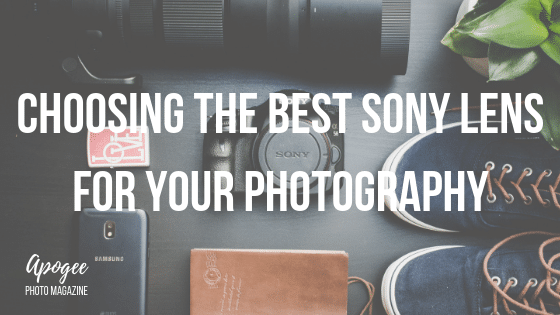


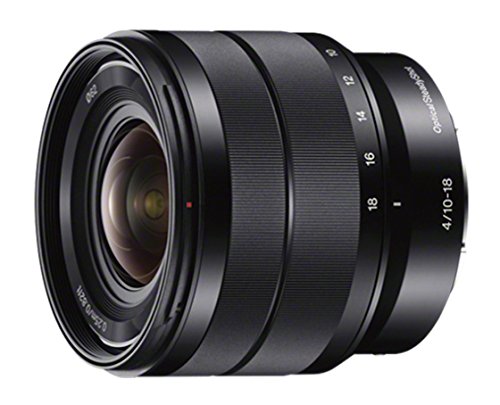





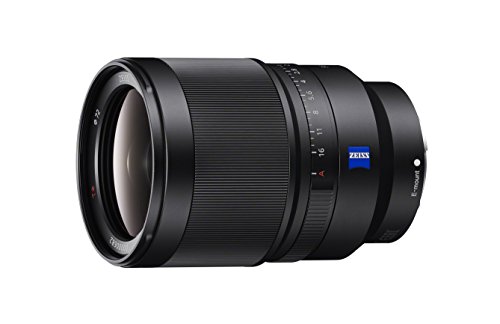




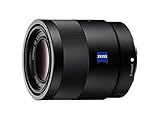




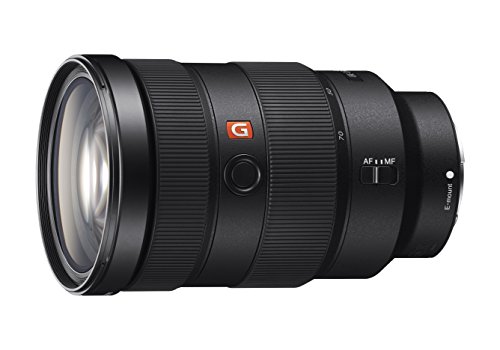









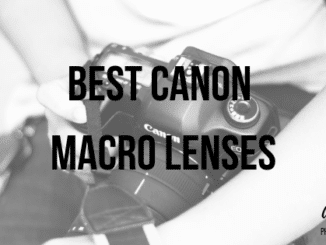
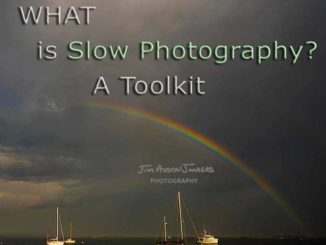
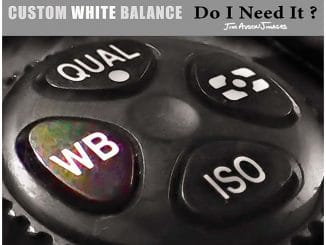
Leave a Reply